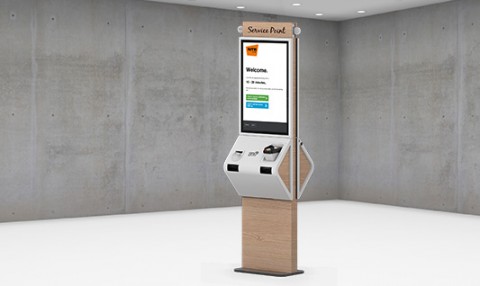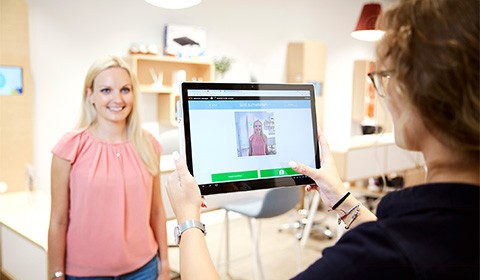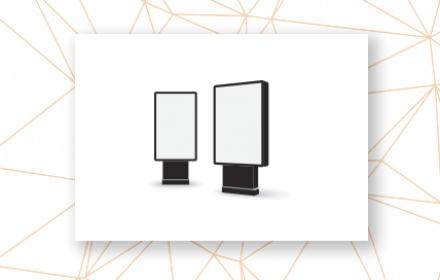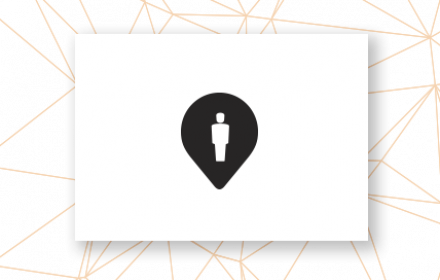
Queue management systems and their potential in the times of social distancing
While dealing with long waiting lines and resolving issues stemming from excessive queues has been a concern for retailers ever since modern retail came into existence, the emergence of the COVID-19 pandemic has brought forth a new aspect to dealing with crowded stores: public safety. In this article, we are going to take a closer look at the different types of queue management systems and how they can be used in order to maintain social distancing in a retail environment.

A new reality for retail stores
It’s anything but business as usual: trying to run a shop or a service during the ongoing Corona crisis is certainly a challenge. Serving customers while keeping them and employees safe is tricky, but digital queuing can help a lot in this regard. The technologies behind virtual queues are not entirely new; the call for social distancing just highlights some of the many benefits they offer.
Most countries have introduced legal measures to combat the spread of COVID-19. To ensure customer satisfaction whilst adhering to the new regulations, one thing is for sure: long queues and crowded lobbies need to go. Digital queuing (also referred to as virtual or remote queuing) technology allows businesses to serve their customers in a timely manner while they stay out of harm’s way.
What types of queuing solutions exist in the retail space?
The topic of managing queues effectively has been a subject in the academic world, but certainly it has remained somewhat of a niche topic. One of the most referred to researchers on the topic is MIT Professor Richard Larson, who drew from a waiting experience to build what became a career as a researcher in queuing psychology. You can view a video of one of his talks here.
Generally speaking, you will likely find one or more of the following types of queue management solutions in a given retail environment:
- Structured queues: Lines form in a fixed, predetermined position. Examples are supermarket checkouts or airport security queues.
- Unstructured queues: Lines form naturally and spontaneously in varying locations and directions. Examples include taxi queues and waiting for consultants in specialist retail stores.
- Kiosk-based queues: Arriving customers enter basic information into a kiosk, allowing staff to respond accordingly. Kiosks are often used in banks, as well as medical and governmental facilities.
- Mobile queues: Rather than queuing up physically, customers use their smartphones. They do not have to wait in the store but rather receive a notification when a spot becomes available.
Long queues, whether they are structured or unstructured, often deter walk-in customers from entering the store. Additionally, they limit productivity and cause excess stress levels for customers and staff. Kiosk-based and mobile queues provide a much more customer-oriented approach and have been implemented in a broad range of variations: In some cases, customers can book time slots online through a web interface or an app, join the queue by using a self-service welcome terminal or ticketing kiosk or queue in on a tablet or maybe even using a robot assistant on site. It is also possible to simply scan a QR code posted in a shop window.

Algorithms help predict the approximate wait time and the patron can be notified through an app, via SMS or a buzzer when it is their turn. This does not only significantly reduce the time the customer has to spend in a crowded and thus potentially infectious area, but also simply saves a lot of their time.
While all of these options help in delivering a more pleasant, effective and – in times of social distancing – safe waiting experience, each has its own advantages and disadvantages. Finding the right product and fit is important, as is implementing a queuing solution which is a great match for your brand.
Does effective queue management directly affect the customer experience?
There is an interesting aspect about the experience of waiting in line: The waiting times we perceive often do not correspond with the actual times we spent in line. We may attribute a period of time falsely to be “longer” than normal or deem another period “shorter” despite it actually exceeding the average waiting time. For the most part, this has to do with how we can bridge the time waiting. As Alex Stone pointed out in a piece for the New York Times:
“Occupied time (walking to baggage claim) feels shorter than unoccupied time (standing at the carousel). Research on queuing has shown that, on average, people overestimate how long they’ve waited in a line by about 36 percent.”
In the same article, Stone also makes a good case for keeping customers in the loop about current waiting times: “Our expectations further affect how we feel about lines. Uncertainty magnifies the stress of waiting, while feedback in the form of expected wait times and explanations for delays improves the tenor of the experience.”
Modern digital queuing solutions can address both these issues: By granting customers the option to spend their time freely between appointments by alerting them when their turn is imminent, customers can fill their time at their own discretion and don’t have to face the frustration of unoccupied time. At the same time, the systems help raise the level of transparency by presenting the customer with accurate waiting time predictions, thus drastically reducing the discomfort of uncertainty.
Introducing a dedicated welcome agent to your store process
Particularly in information-driven retail, where extensive product consultations often precede the purchasing decision, a dedicated welcome agent who handles the reception process can be a great addition to the customer journey. In this role, the agent immediately greets customers as they enter the store and asks them for the purpose of their visit. This way, the customer not only is attended to straight away, the agent also can present visitors with a waiting time prediction and set up an appointment if desired. Additionally, the welcome agent can take on a gatekeeping function by assigning priorities based on the nature of the customer’s request.

From an experience perspective, this approach elegantly addresses issues with transparency by communicating wait times outright and with time management by allowing customers to bridge wait times by running other errands before returning. For employees, the process offsets stress levels created by having unattended customers in the store and promotes conversational sales by granting sales reps ample time to prepare before interactions.
From a public health perspective, relying on a dedicated human welcome agent is preferable to using a queue-in terminal with a common touch interface, which may be subject to contact transmission risk.
Relying on queuing kiosks in the times of social distancing
While a dedicated welcome agent will be the preferred option for most retailers who are looking to implement and leverage a digital queuing solution during the ongoing pandemic, there are different steps and measures that can be put into place to minimize the risk from the use of shared interfaces like touchscreen kiosks.

Some touchscreens can be operated while using protective gloves, which may help to reduce the overall risk of contamination. Retailers can also have their staff disinfect the screens in more frequent intervals in addition to positioning hand sanitizer right next to the screen. Voice operation using speech-to-text and text-to-speech or gesture-based navigation also provide an option to avoid the need to touch the screen while queuing in.
Positioning the kiosks within the store area also needs to be investigated carefully when considering self-service terminals as an entry point into the queue management system. Ideally, positions should be chosen in a way that does not create bottlenecks within the stream of visitors entering the store. This is a concern in particular for store setups within malls, where queuing outside may cause customers to line up in a way that forces people passing by to fall short of the recommended safe distance.
Is it possible to use queuing information in business analytics workflows?
The advantages for businesses are numerous: the information such systems provide indicates how many people are in line at any given time, highlights peak hours and which services are in demand and at which time – and, of course, it helps staff to work efficiently. Digital queuing systems can also be used to get customer feedback after every interaction, as they are already used to the technology and thus more likely to comment on their experience.
This data can prove invaluable in the quest to tailor product and service offerings to customer needs and to allocate the right amount of staff during peak hours. Store traffic during popular hours will likely pose an even greater problem going forward, as the stores might be faced with regulations prohibiting them from letting more than a certain number of people into the store at any given time. This creates the necessity to prioritize, manage and spread traffic throughout the day and queuing systems, which include ascertaining the customers' immediate needs, are a great way to deal with this issue.
In conclusion, will we see more queuing solutions in retail spaces post 2020?
The retail industry is more than due for a major disruption and the COVID-19 crisis seems poised to accelerate the process. It is quite likely that we will see retail stores, especially specialist retailers operating from smaller locations with limited space, opt into implementing virtual queuing solutions. Mobile devices will definitely play a crucial role in a variety of functions: As mobile, personal monitoring devices, as notification beacons, as queue-in terminals and to communicate potential delays and rescheduling. The way seems paved for queue management systems in their many varieties, shapes and forms.
If you want to learn more about our queuing approach read our case study about how Hutchison Drei is able to set trends in queuing with NTS welcome manager.




